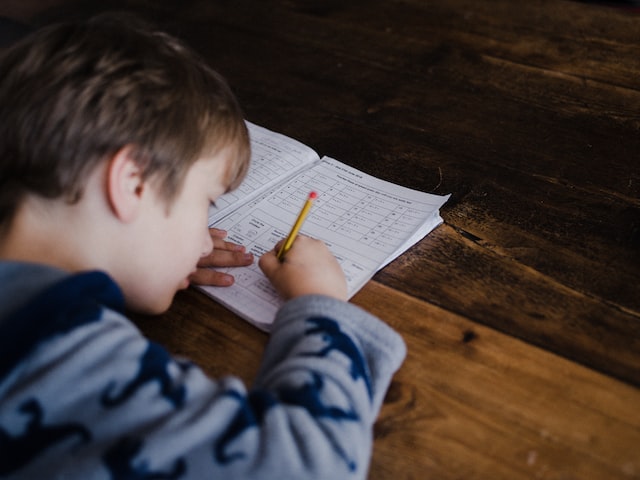The fifth grade year is a time when kids should master some important math concepts. They should also learn the foundations of algebra, geometry, and probability that will be built upon in later years.
Math For Fifth Graders
One of the key advancements in fifth grade math is decimal fractions. This will help students understand place value and decimal operations, which will make them more fluent with the entire number system.
Addition and Subtraction of Fractions
Fifth graders need to learn the basics of adding and subtracting fractions. This is the first step to building a solid foundation for understanding algebra, decimals and percentages. Fractions can be a tricky concept to grasp, so it’s important for teachers to use various strategies to help students understand the basics of adding and subtracting fractions.
To help students better understand the concept of adding and subtracting fractions, teachers can create visual models for their students to use. They can also show students how to add and subtract fractions with different denominators.
This helps them relate fractions to whole numbers, which will allow them to solve problems easily. They can also create number lines to help them keep going until they get to a whole number.
In addition, they can use fraction strips and area models to represent fractions and make them more concrete. By making these fractions tangible, students will be able to understand how they are added and subtracted, which will ultimately lead to higher achievement in math.
Another strategy to help students better understand the concept of adding and subtracting fractions is to talk about them in everyday conversation. This will allow them to use them while cooking, baking or measuring time, and it will help them develop a better grasp of the concept.
To further enhance students’ understanding of the concept, teachers can also use the internet to find various resources. They can search for math worksheets and download them in PDF format to practice with their students.
For example, they can find a game on SplashLearn that helps them add and subtract mixed numbers. The game is fun, interactive and challenging, and will help them build a stronger understanding of this concept.
Once students are familiar with adding and subtracting fractions, teachers can introduce them to negative fractions. These can be added and subtracted using the same procedures, but they will need to have a negative numerator for subtracting and a positive numerator for adding.
Students can also use pattern blocks to add and subtract improper fractions, which can be a great way to help them understand the concept of adding and subtracting mixed numbers. They can also use egg cartons to help them understand the concept of adding and subtracting with different denominators.
Multiplication and Division of Decimals – Math For Fifth Graders
In fifth grade, students develop their understanding of decimal computations and the relationship between standard notation and exponents. These skills will be a foundation for the rest of their math education.
This unit starts with a quick pre-assessment and three activities to determine whether your fifth grader is ready to multiply numbers containing decimals by powers of 10. The games will help kids practice and apply their multiplication facts in a fun and interactive way.
The best part is that the process of dividing and multiplying decimals by powers of 10 is just as easy as it sounds. You just need to know where to place the decimal point.
These self-checking puzzles will not only strengthen the connection between standard notation and powers of ten, but they also teach kids to use their imaginations when it comes to solving problems with decimals. The twelve puzzles are based on real-life scenarios such as the height of mountains or the length of rivers.
For example, this puzzle will challenge your child to multiply a number containing decimal points with the highest possible multiplier. There are two pieces: one piece contains the multiplication expression using standard notation and the other piece shows your child how to move the decimal point.
Another puzzle will challenge your child to solve word problems involving the multiplication of numbers by decimal digits, which is just as challenging as the same problem using whole numbers.
A self-teaching worktext for fifth and sixth graders that covers the four operations with decimals up to three decimal digits, concentrating on decimal multiplication and division. This book also teaches the concepts of place value, comparing, rounding, addition and subtraction.
The multiplication of a decimal number by a power of ten is no small feat, but it’s not as difficult as many parents assume it to be. To get the most out of this lesson, your child should have mastered the concept of adding zeros to a fraction whose denominator has a power of ten in it in Grade 4. This will not only prepare them for this lesson, but they will also be ready to learn how to multiply decimals by powers of ten when they reach Grade 5. The next step is to teach them how to multiply decimals by whole numbers!

Geometry – Math 5 Grade
Geometry is a part of math that studies the size, shape, position, and dimensions of things. It also studies the relationship of different types of geometric shapes. This is an important subject for students in fifth grade, as it provides a foundation for the study of other mathematics concepts and applications.
In the classroom, fifth graders learn about 2-D and 3-D geometry. They explore the properties of squares, rectangles, triangles, circles and rhombuses. They also investigate how polygons relate to lines. They also develop an understanding of symmetry and congruence.
The second major area of geometry for fifth graders is measurement. They learn to use customary standard units of measurement and convert them into the metric system. They apply this knowledge to solve problems regarding perimeter and area.
Thirdly, fifth graders learn about the coordinate plane. They recognize that a coordinate plane has a pair of perpendicular number lines called an axis and the intersection point of these lines is at 0.
Fourthly, fifth graders learn about angles. They identify acute, obtuse, and right angles. They also understand how to measure angles using a protractor.
They practice measuring angles by putting the common endpoint of two rays on the center of a circle and then observing the fraction of the circular arc between the rays. They then use their knowledge to determine the correct angles to include on a diagram.
Besides recognizing and measuring angles, 5th graders also learn about the properties of parallel and perpendicular lines. They also know that a straight line is always parallel to the x-axis and perpendicular to the y-axis.
In the classroom, fifth graders use their understanding of these concepts to create and plot points on a coordinate grid. They are also able to use a compass and protractor to construct a square, circle or other three-dimensional shapes.
This BUNDLED fifth grade math resource contains a variety of math worksheets that are perfect for morning work, assessment, homework, review, fast-finisher activities, exit tickets and math centers. They are aligned with the Common Core State Standards and are available in three formats – print and go, Google Slides, and JPEG.
Graphing
Graphing is an important skill in math that students need to learn to represent data and trends. Fifth graders can use graphing worksheets to practice creating different types of graphs and solving problems based on them. Moreover, they can also improve their graphing skills by using these worksheets to interpret the graph and form equations and fractions based on the information provided in the graph.
Various kinds of graphs are used to represent numerical and categorical data. It is important to choose the graph type based on the kind of data that you are trying to present. For example, if you are trying to show the relationship between temperature and time, you will need a graph with lines or a scattergram. If you are only showing the relationship between two variables, a bar graph will work best.
The main goal of graphing is to communicate the relationships between the independent and dependent variables, such as temperature and time. This can be accomplished by plotting the values of the independent variable on one axis and the value of the dependent variable on the other. The axes should be clearly labeled, and the symbols must be legible.
Fifth graders can also use graphing worksheets to practice the skill of interpreting graph data to answer questions. For example, if you are comparing the number of girls to the number of boys in class, you can use a graph to help you see the differences.
Another type of graph is a circle graph, which can be used to compare numbers or shapes. This can be an excellent way to teach fractions and decimals because it involves visual representations of tenths and hundredths.
Graphing in the coordinate plane can be difficult for some students, so I like to use solve & color worksheets to help them with the process. These are self-checking and make a great rotation for math stations or an emergency sub plan in case you aren’t sure if your students have mastered the process.
Graphing in the coordinate plane is an important skill for fifth graders to learn because it allows them to understand and visualize how to divide a number. It can also be helpful when trying to figure out a multiplication problem. You can teach graphing in the coordinate plane by focusing on the importance of order. During this lesson, you can call out the words x-axis, y-axis, origin, and ordered pair to help your students remember how to place their points correctly.
